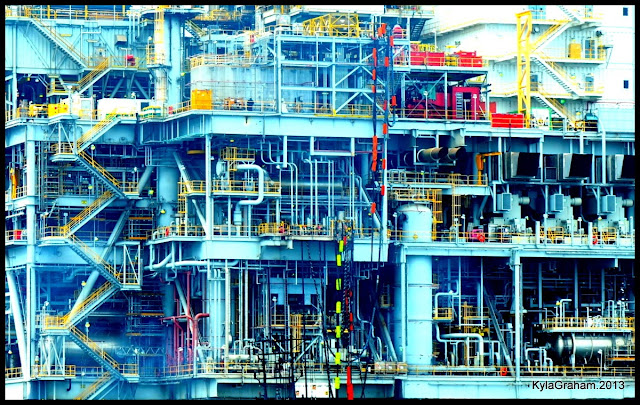365 Project, Day 68
Here is my day sixty-eight submission to my 365Project:
Today was my last day on the vessel offshore Angola...time to go home! Luckily for me, shortly before the helicopter as due to take me to shore (after 10 weeks on the ship!), a pair of humpback whales (Megaptera novaeangliae) swam across our bow nice and slowly. It felt like I was a getting a whale send off and I got this shot of this whale looking pretty fat and healthy from behind :)
Fun fact of the day:
Humpback whales of the southern hemisphere, when in their feeding grounds in the colder, more productive waters of Antarctica, eat tiny crustaceans (mostly krill) and small fish consuming up to 3000 lbs (1360 kg) of food per day.
To read more on humpback whales check out the NOAA Fisheries webpage on humpback whales.
And some more photos from my last sighting on this job:
Today was my last day on the vessel offshore Angola...time to go home! Luckily for me, shortly before the helicopter as due to take me to shore (after 10 weeks on the ship!), a pair of humpback whales (Megaptera novaeangliae) swam across our bow nice and slowly. It felt like I was a getting a whale send off and I got this shot of this whale looking pretty fat and healthy from behind :)
Fun fact of the day:
Humpback whales of the southern hemisphere, when in their feeding grounds in the colder, more productive waters of Antarctica, eat tiny crustaceans (mostly krill) and small fish consuming up to 3000 lbs (1360 kg) of food per day.
To read more on humpback whales check out the NOAA Fisheries webpage on humpback whales.
And some more photos from my last sighting on this job:
















.JPG)

































